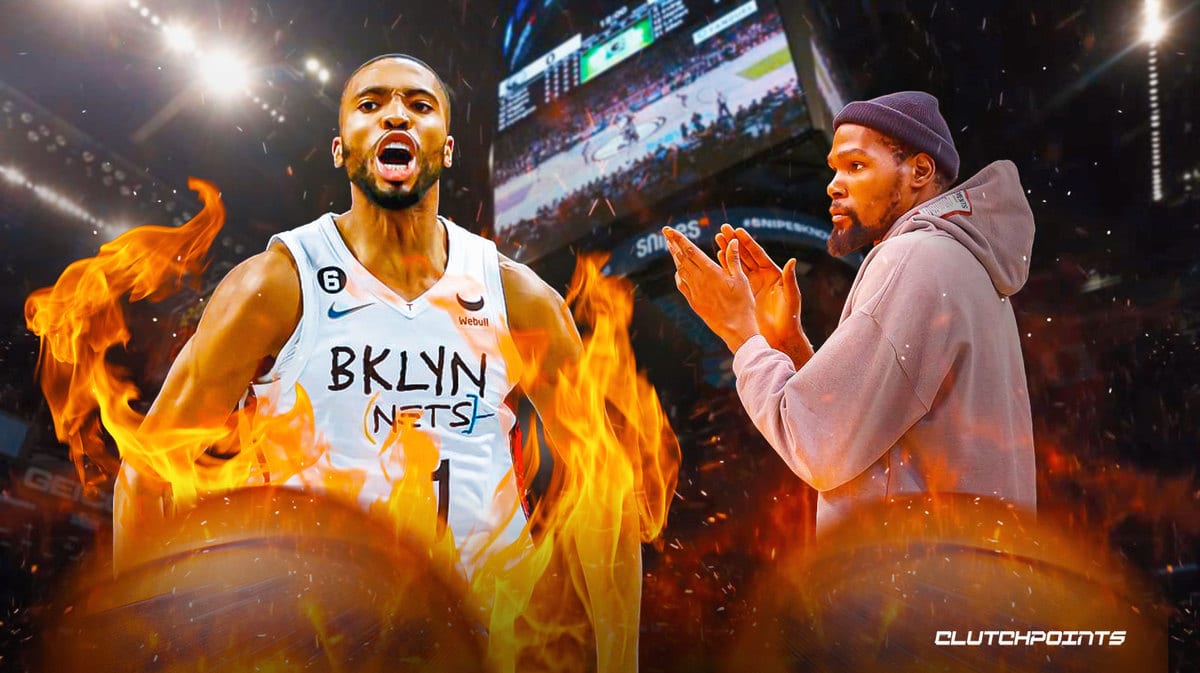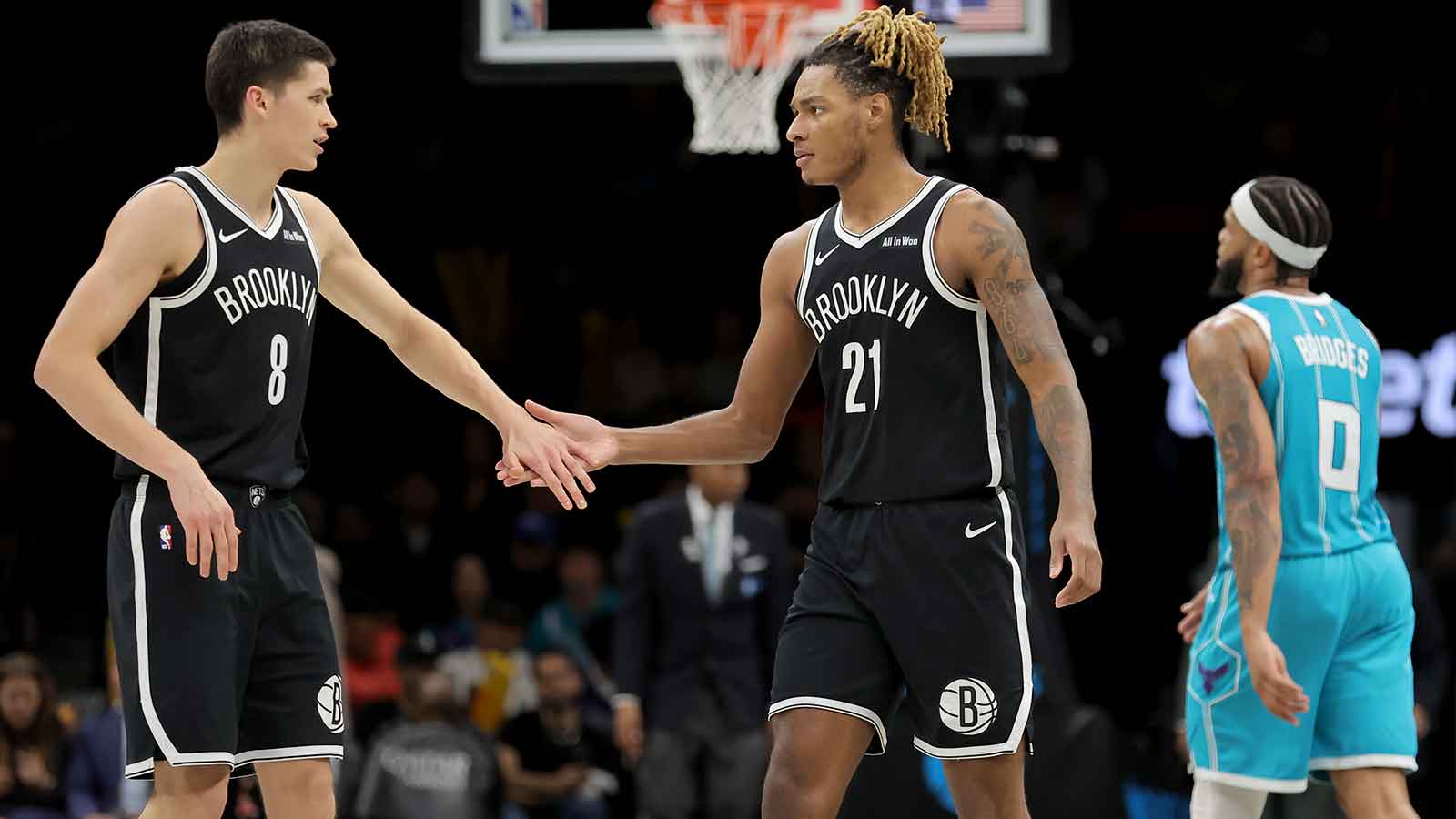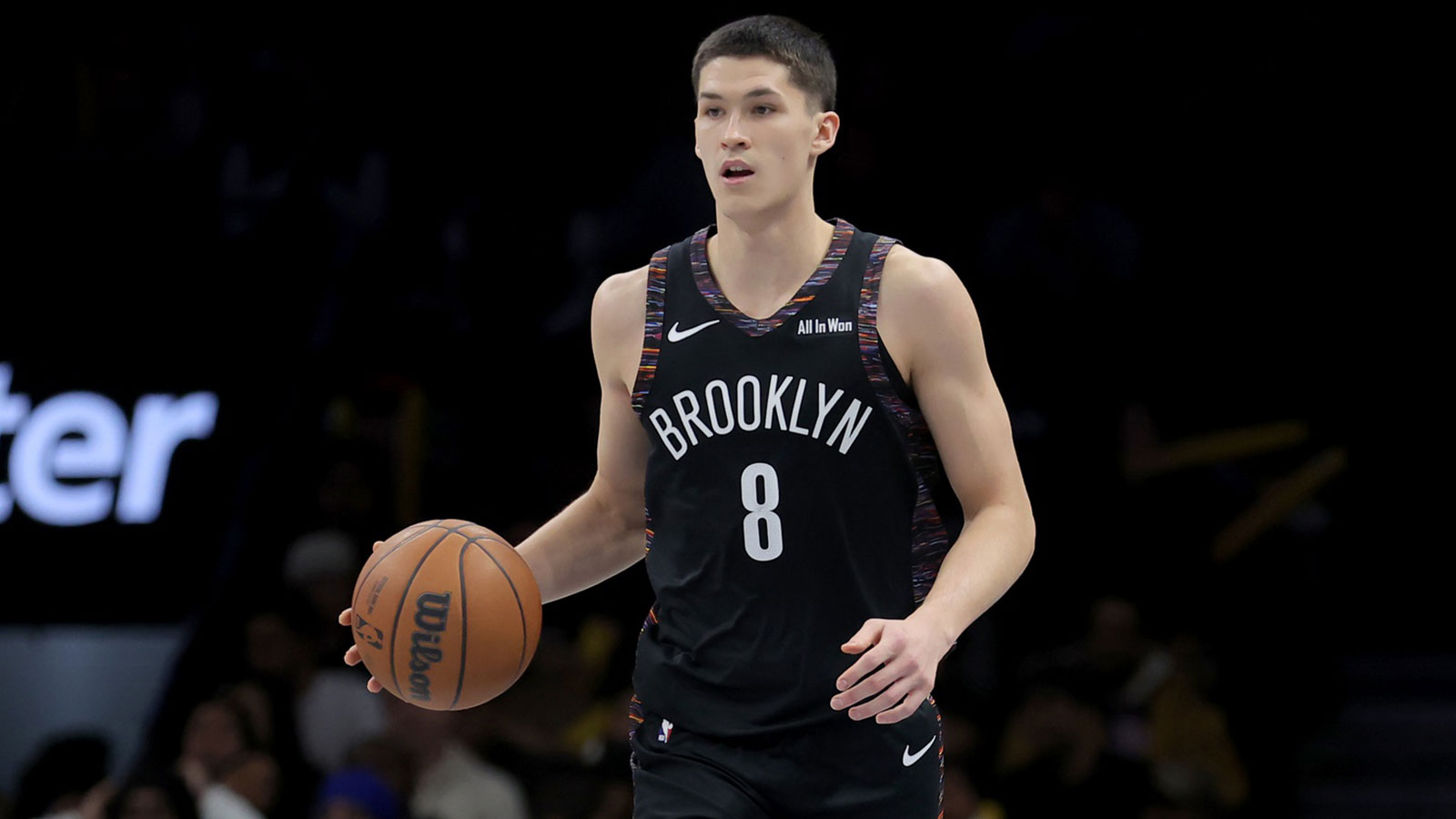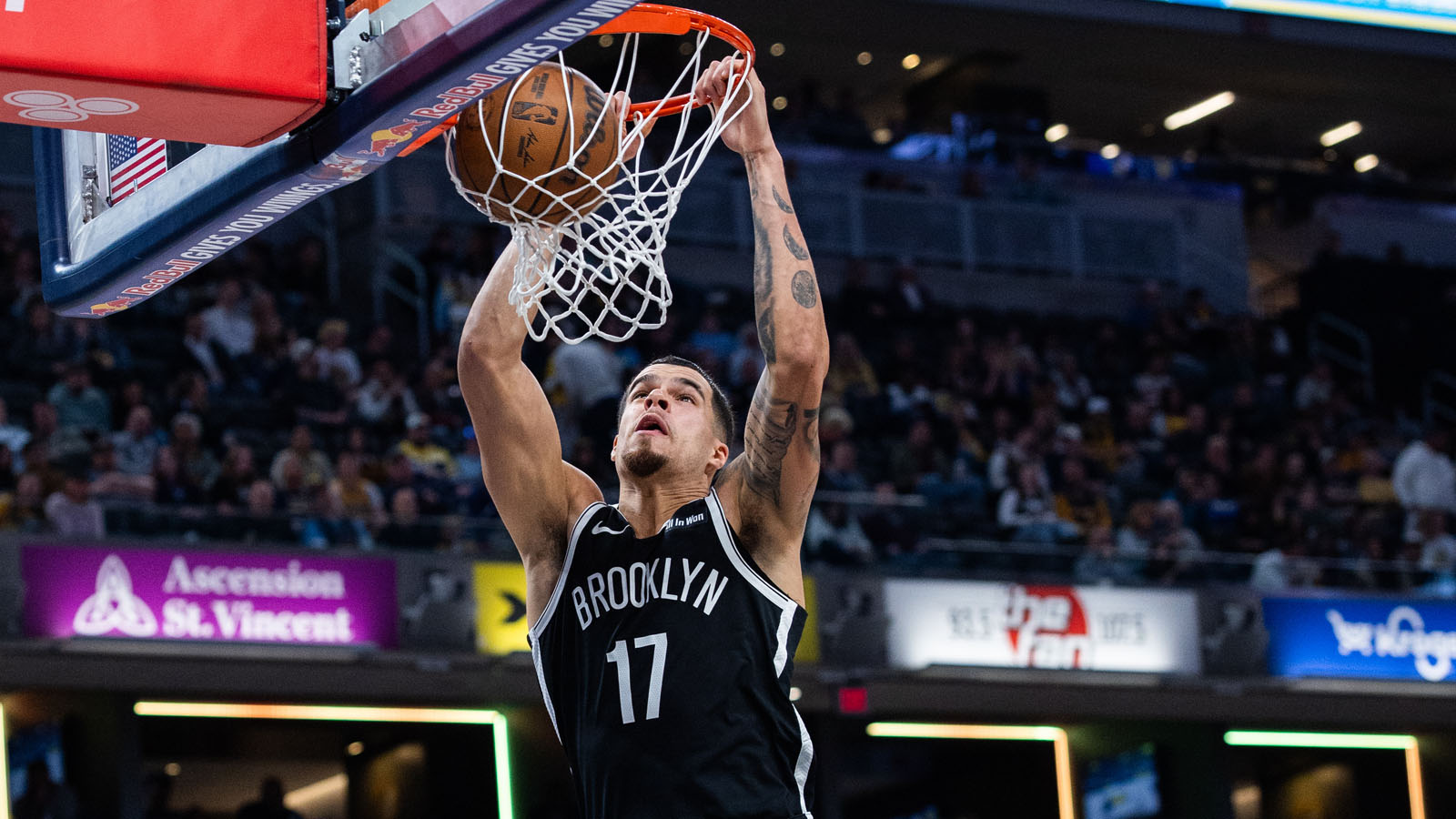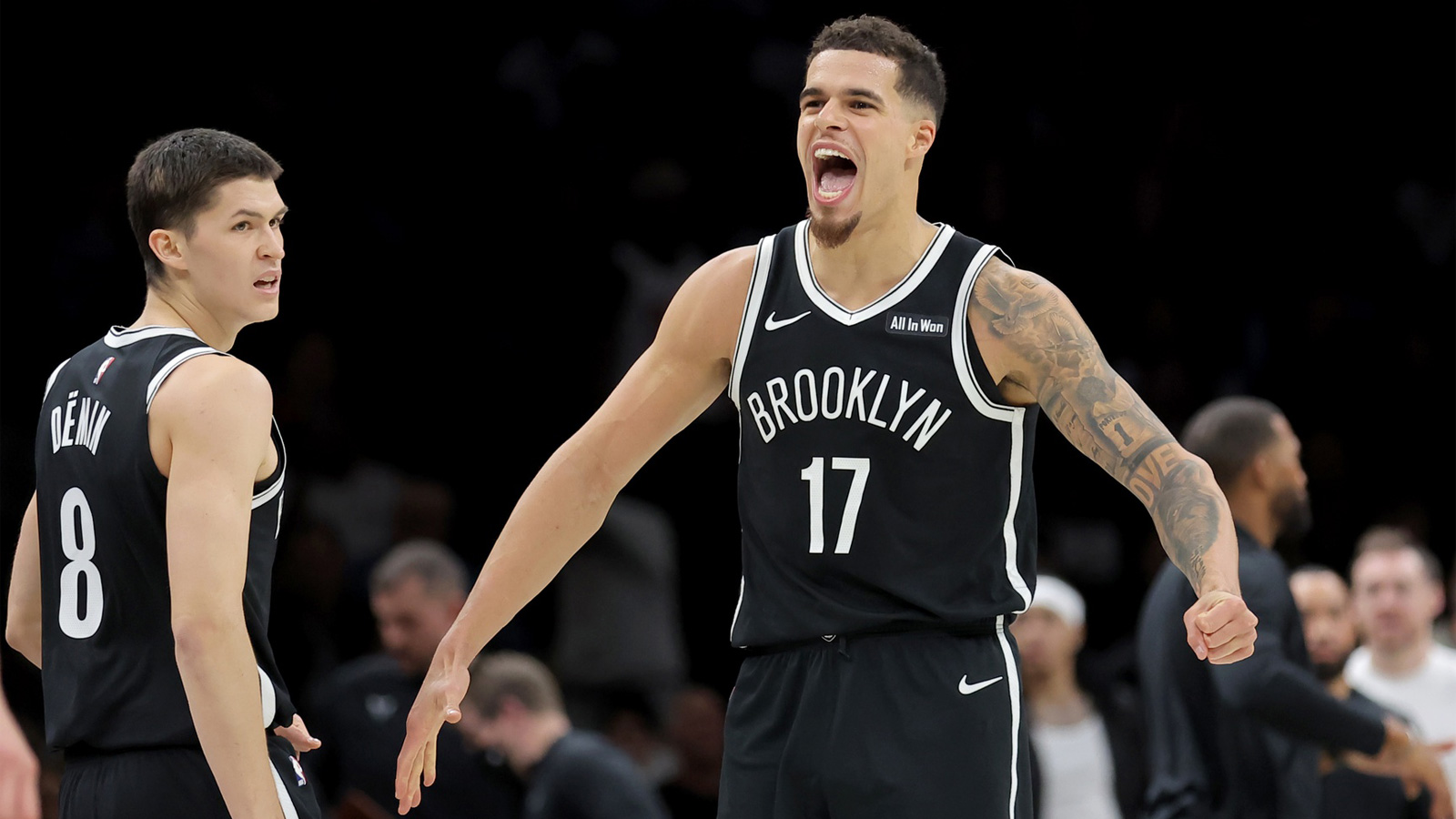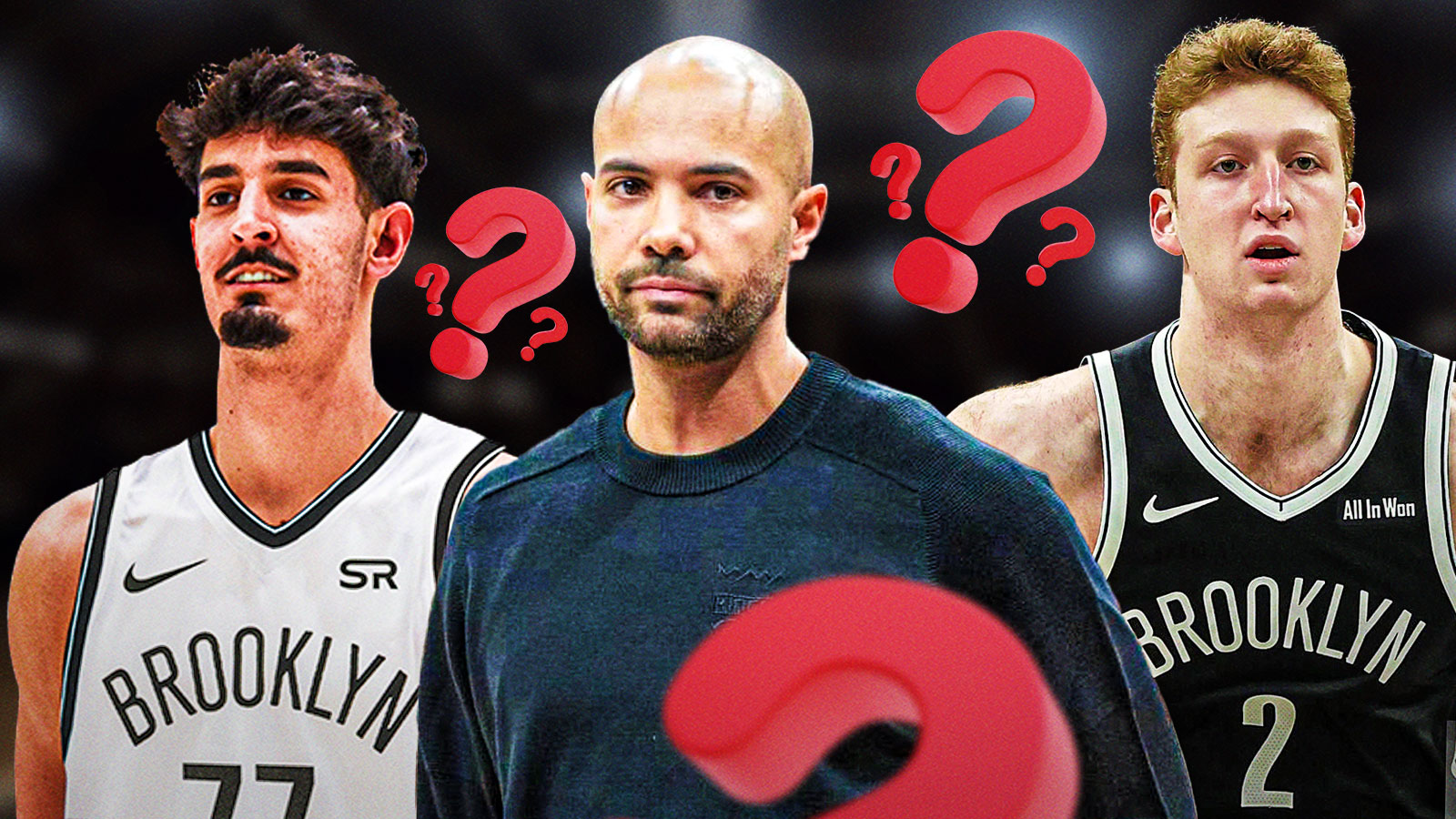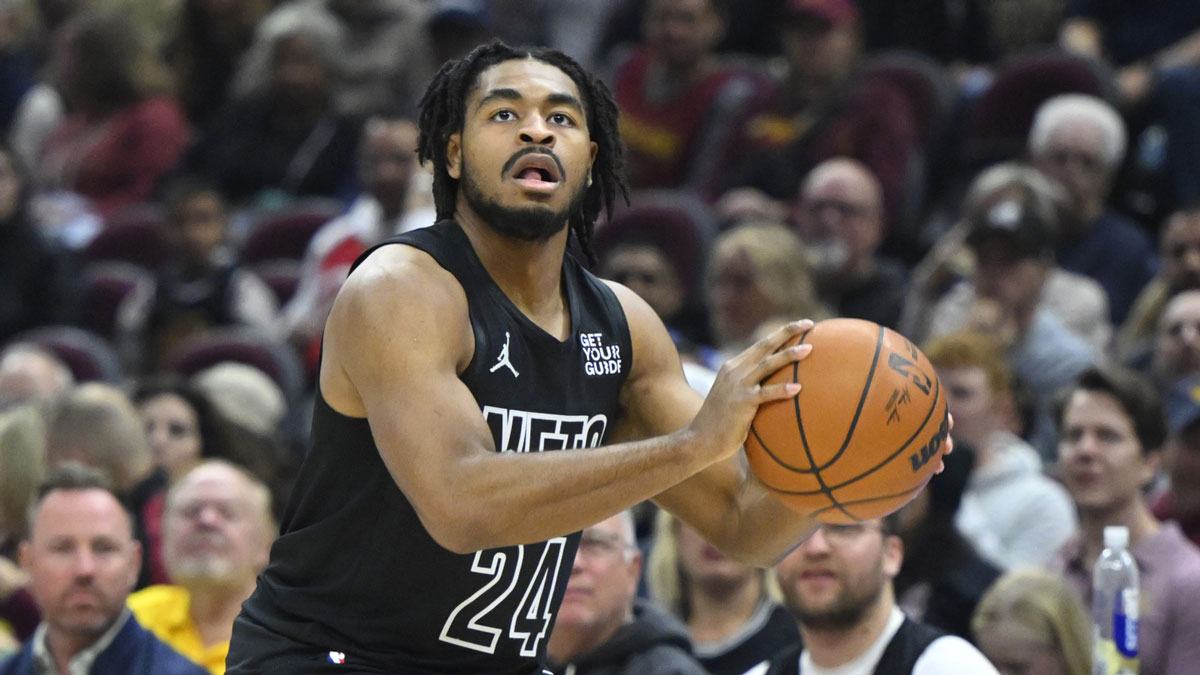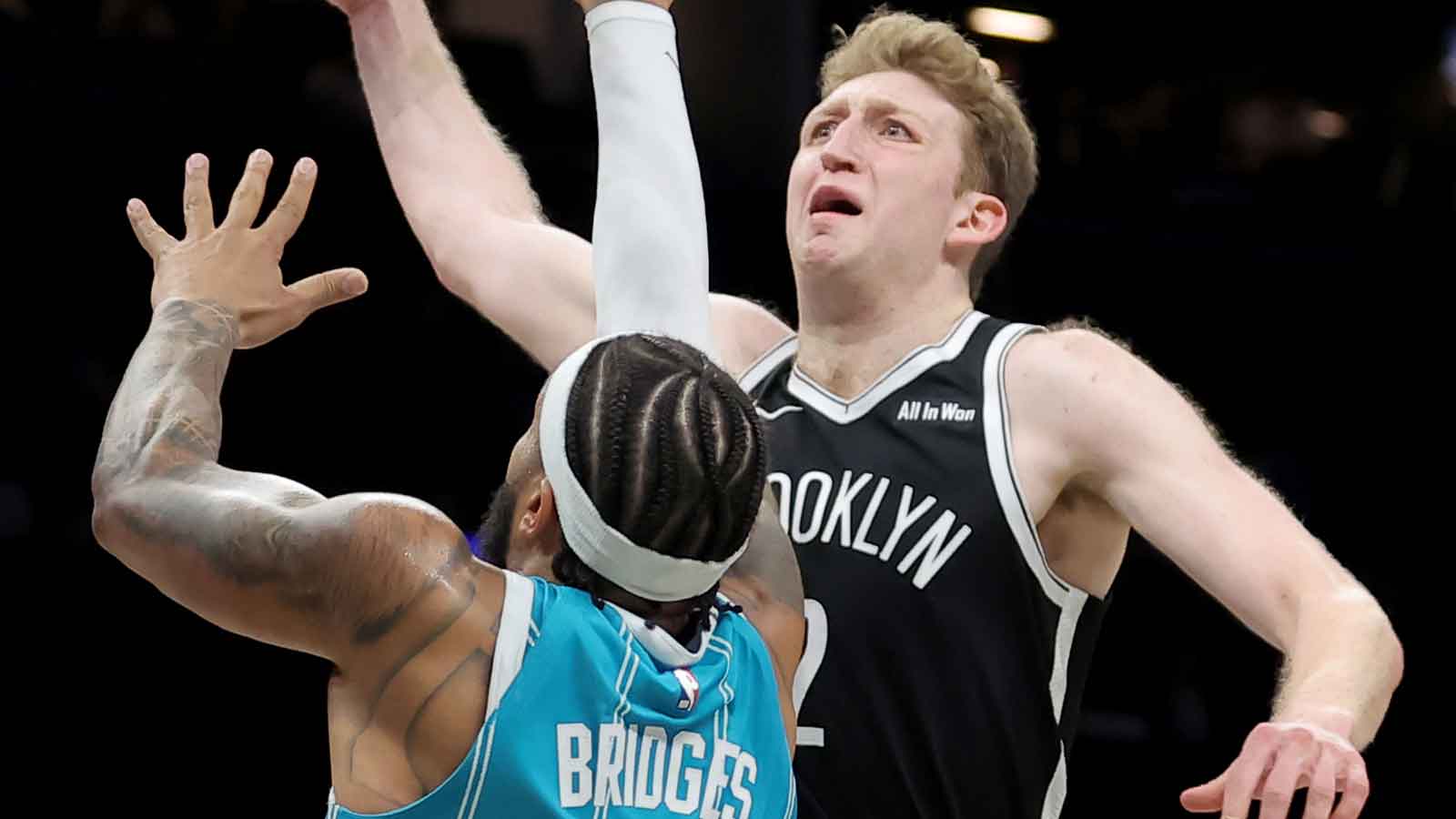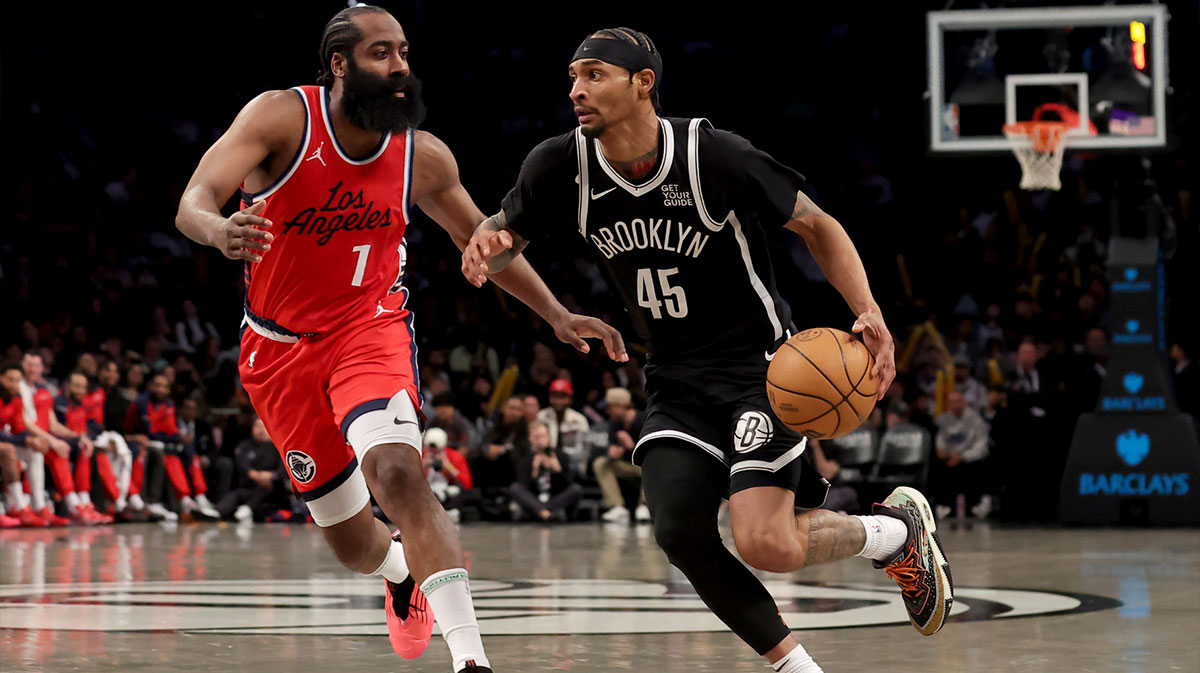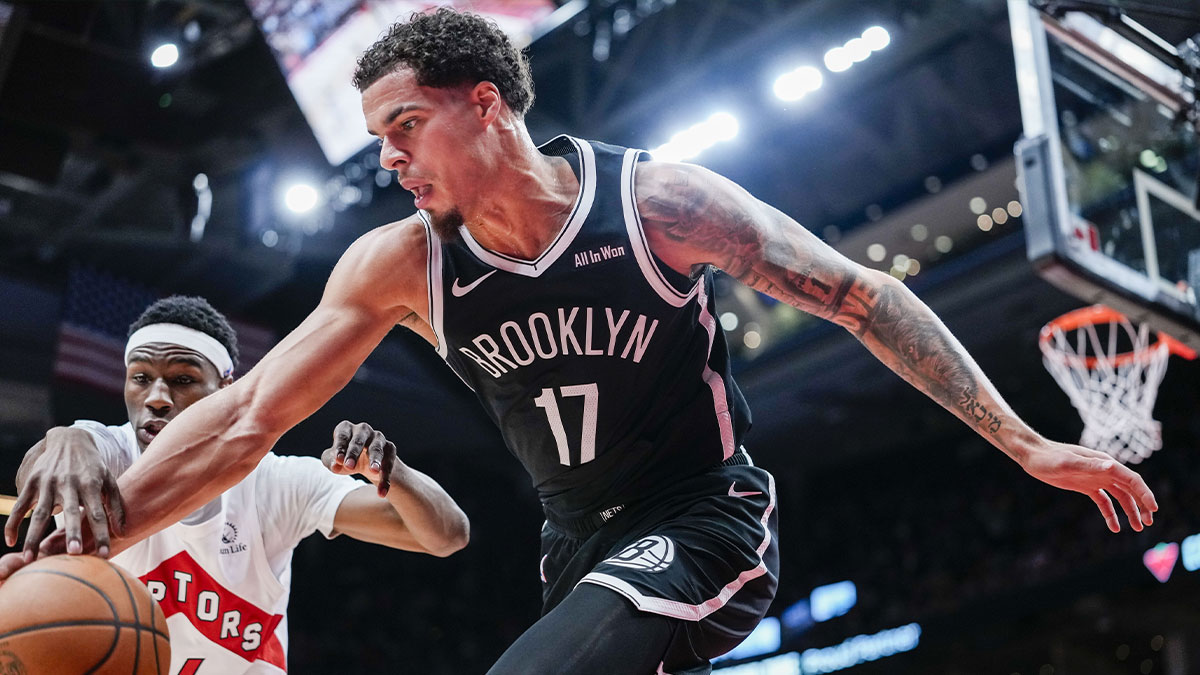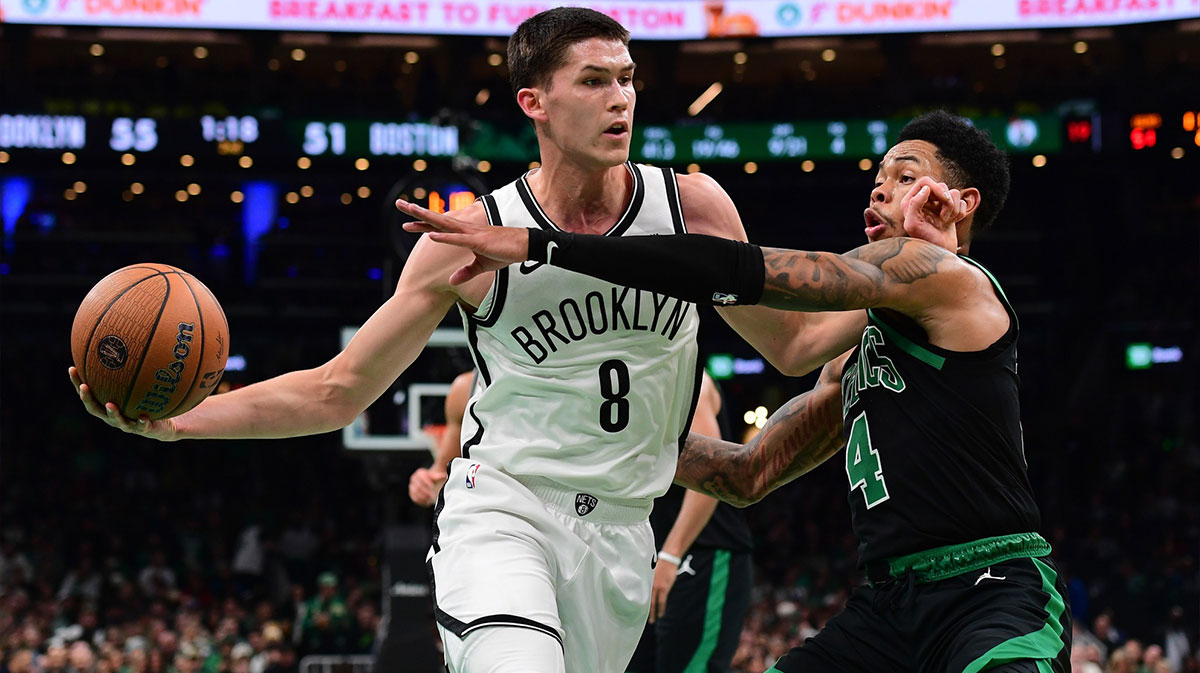Mikal Bridges has turned heads across the league following a blockbuster trade to the Brooklyn Nets. The 26-year-old is emerging as the Nets' leading scorer after the team acquired him as part of a package for Kevin Durant at the deadline. Bridges briefly impressed in an expanded scoring role for the Phoenix Suns with Devin Booker sidelined early this season, but the returns this time around have been even more dramatic.
In nine games, the former lottery pick is averaging 26.1 points on 53.6 percent shooting from the field and 50.0 percent from three. Bridges has scored 30-plus points four times during that span after reaching the total just twice in four and a half seasons with the Suns. Two of those performances have come in Brooklyn's last two games, with Bridges scoring 38 against the league's fourth-ranked defense in Boston Friday before dropping 31 in a win over Charlotte Sunday.
The forward has done the majority of his damage in the mid-range, navigating to his spots with ease and elevating to a smooth pull-up jumper. While Bridges has found early success, that mid-range-heavy approach has not come without questions.
“We'll keep looking at the percentages,” Vaughn said of Bridges' shot profile postgame Sunday. “What we do want is for him to continue to get to the rim and shoot threes for us. He has shown a knack for getting to his spots though. We saw it in Boston… I’m learning more about him, what shots he likes to get to. If they’re going in we love them, but we do wanna have a profile of really getting to the rim and shooting threes and putting pressure on the defense that way also.”
For a Nets team that ranks dead last in shots at the rim and has voiced a desire to take 40-plus threes per game, it's easy to see how there could be conversations surrounding Bridges' shot chart. In nine games, 50 percent of his attempts have come from the mid-range compared to 25 percent at the rim and 26 percent from three, per Cleaning The Glass.
Bridges has excelled from 4 to 14 feet in particular, an area in which he dominated the Charlotte Hornets for 19 points on 9-of-9 shooting in the first quarter, the most he has ever scored in a quarter during his five-year career.
About 35 percent of Mikal Bridges' shots with the Nets have come from the short mid-range, more than any other area on the floor.
The analytical conversation behind this type of shot profile has become polarizing. There's a common misconception that analytics models have branded all mid-range attempts as “bad shots.” In reality, these models indicate that those shots are converted at a low percentage by the majority of NBA players. The league's top scorers most often excel in the mid-range, something Nets fans know all too well having watched Durant and Kyrie Irving the last three seasons. However, those star scorers are the exception, not the rule.
The question for Brooklyn now becomes: is Bridges one of those exceptions?
Following his fourth 30-plus point performance in seven games Sunday, the newest Net certainly seemed to think so.
“I know the analytics with the threes and layups, but we're basketball players at the same time, we work on our games,” Bridges said. “Sometimes you can't get to the rim, you just can’t. There’s a lot of other space on the floor that you can get to. And if you work on it enough and you’re confident enough, those can be your layups.
“I'm just picking spots and reading the defense. If they back up too much I have that shot. If they’re up, I can drive. So just mixing it up and trying to play all three levels. I don't think analytics is great on guys like Steph Curry shooting 40-footers and he’s making all of them. So people work on their games, and if you trust it and believe in it, why not shoot it?”
I asked Mikal about his approach given analytics not favoring the mid-range shot in today's NBA:
“I know the analytics with the threes and layups, but we’re basketball players at the same time, we work on our games. Sometimes you can’t get to the rim, you just can’t. There’s a… https://t.co/ztOpnSMBNO pic.twitter.com/P9Jd5Ywdp4
— Erik Slater (@erikslater_) March 6, 2023
The numbers justify Bridges' confidence. He’s shooting 49 percent (26-of-53) on his short mid-range attempts with Brooklyn. That ranks in the 84th percentile for wings. In 2021-22 with Phoenix, he attempted 29 percent of his shots (246) from that range, converting at a 56 percent clip. That ranked in the 95th percentile for wings and would have ranked in the 99th percentile among point guards.

For reference, Durant shot 52 percent from the short mid-range last season, although it came on 382 attempts.
The success is part of a major shift in Bridges' shot profile throughout his career. He has increased the frequency of his short mid-range attempts each season while decreasing his three-point attempts. That can largely be attributed to his increased ball handling and usage during his rise in Phoenix's offense. Bridges' increased efficiency amid the changing shot diet is highly encouraging as he has steadily improved from both the short mid-range and three-point land each season.

Any gripes the Nets may have with Mikal Bridges' mid-range-heavy approach likely stem from its potential effect on the offense as a whole. Brooklyn ranks 27th in offensive rating during nine games with the new-look roster. Vaughn Briefly touched on concerns about shot profile following Bridges' 31-point performance in a Feb 28 loss to Milwaukee:
“We don't want to live with it, you know, because you play a team like tonight, that's the shot they want to give up,” he said of Bridges' mid-range success. “That's their profile defensively. And so if you make it at a high level, you get rewarded for it, but you see getting to the rim puts an extreme amount of pressure on the defense, so if we can mix in getting to the rim like they did in the second half, we can take some of that mid-range.”
The coach's concerns should not come as a surprise given his team's league-worst rate of shots at the rim. Just 32 of Bridges' 167 shots with Brooklyn have come within four feet. That ranks in the 42nd percentile among wings. However, a low percentage of shots at the rim is not uncommon for lead-scoring options. Kawhi Leonard (22 percent) and Khris Middleton (17 percent), two players who are similar archetypes to Bridges, attempt less than a quarter of their shots at the rim.
Vaughn's comments should not be viewed as an indictment of Bridges' mid-range success, as analytics often are these days, but rather a recognition of the need for balance within Brooklyn's offense. After all, the absence of a closer has been evident during several losses for the new-look Nets. The mid-range is a key component of the three-level scoring ability that allows players to thrive in crunch time and elevate to star status, a leap the Nets hope Bridges can make in the coming years.
Overall, it has become increasingly evident each year for the last decade that a select group of players possess the talent to justify a heavy dose of mid-range shooting. The Nets had two in Durant and Irving for the last three-plus seasons. Early returns indicate they may have another in Bridges. For a team that has been criticized for not landing a star in a pair of franchise-altering trades, that should be seen as a massive victory.

